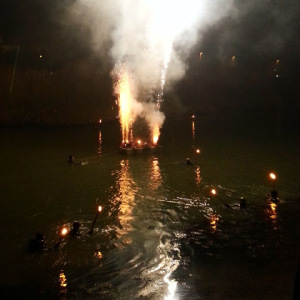The origins of panevin („bread and wine“) lie in the Celtic traditions of the inhabitants of the Veneto region who used a bonfire to evoke the sun, thus longer days (that usually begin with the solstice).
In the middle age the panevin lost its heretical origins and was christianized, means the event was postponed from the 25th of December to the 5th of January to remember the Three Magi that searched for Jesus to offer him their presents. According to a legend, these bonfires helped the Three Magi to find Bethlehem and thus Jesus Christ.

Thus, since the middle age people come together on this day (the 5th of January) to drink a glass of vin brulé (hot wine) and a piece of stollen and to watch the vecia (“the old hag” who is responsible for all the mischief of the last year) – a puppet made out of hay placed on top of a bonfire that is up to 8-10 meters high – burn.

Another tradition of panevin is a crop-forecast for the next year (but today people like to see it also as an omen for their private life): The spectators watch the smoke to make out in which one of the four cardinal direction it’s gonna be blown and recite the following proverbs:
„falive a matina, tol su el saco e va a farina“ (When the smoke goes east, then take a bag and go begging.)
„se la falive le va a sera, de polenta pien caliera“ (When the smoke goes west, then the crop will be good, thus the pot full with polenta.)
Later on that same evening, after the bonfire, a figure of ancient Italian customs is going to visit the children: the Befana.

<
p style=”text-align: justify;”>











